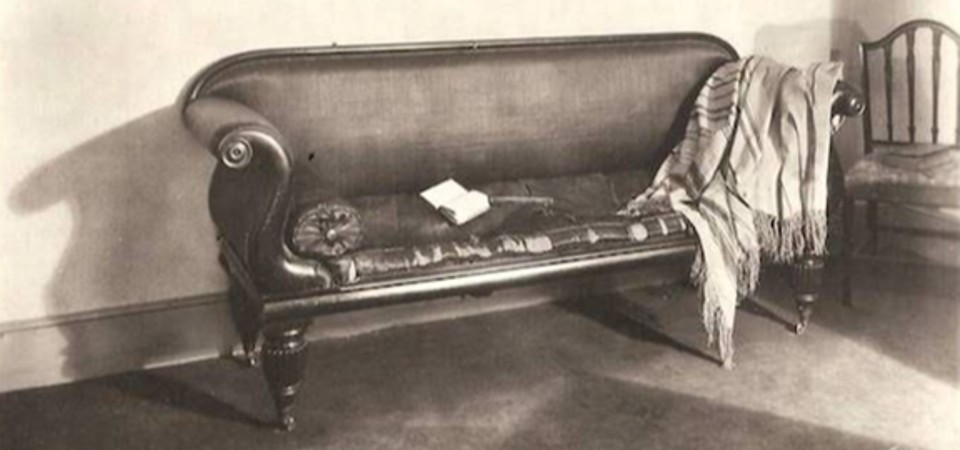The widely accepted story of how the 19th-century English novelist died comes from her sister, Charlotte, who published a short ‘Biographical Notice’ following Emily’s death from tuberculosis, on December 19, 1848.
In it, Charlotte described how “Never in her life has she [Emily] lingered over any task that lay before her, and she did not linger now. She sank rapidly. She made haste to leave us.”.
These words have been interpreted to suggest that Emily wanted to die, that her refusal of aid led to the worsening of her condition, and from that that it could have been avoided.
Now, a new paper published in the journal Women’s Writing has offered an alternative picture of the tragic event.
Dr Claire O’Callaghan, of Loughborough University, has questioned the idea that Emily’s refusal of aid was ‘stubborn and silly’.
She said: “My reading of Charlotte’s letters challenges several of the dominant views about Emily’s death and opens a way of thinking about her behaviour in her final months more rationally and compassionately.
“It dispels the myth that she was in denial about her sickness because we can see plainly that despite her protestants towards medical aid, she is responding to Charlotte’s recommendations for her to allow a doctor to intervene and to take various remedies.
“It draws together Emily’s knowledge of tuberculosis as outlined in her novel, Wuthering Heights, and thinks about how it might be relevant to her.”
“There, she writes of a character whose consumption, as it was known at the time, was at a stage that was clearly beyond the point where medicine could make any difference and a doctor actually says this to the patient’s husband.”
“This shows that Emily’s understood the nature of TB and its prognosis clearly.”
Dr O’Callaghan’s paper, “She Resolutely Refuses to See a Doctor”: Re-reading Emily Brontë and Tuberculosis in 1848; or Charlotte Brontë, Sickness and Correspondence, also shows that Emily had access to that knowledge from the medical materials in the family home – their father’s copy of Graham’s Modern Medicine – which very clearly outlines the progressive stages of the disease, including the symptoms, and the tragic prognosis for the patient.
This provides a very rational reason for why Emily refused aid, said Dr O’Callaghan – that she understood the disease and the nature of her symptoms better than anyone else.
She added: “More importantly, Emily recognised that Victorian medicine offered no cure and as Charlotte’s letters show, she clung to the idea of Emily being cured and recovering.”
“In this light, my reading of the letters suggests that Emily’s refusal of aid was her way of limiting her sister’s investment in false hope.”
“It is really interesting that just weeks after Emily’s death, when Anne, their younger sister, was also showing the symptoms of TB, a doctor – a specialist on the disease - also responded to a letter from Charlotte warning her against the perils of false hope.”
“Finally, my reading of the letters shows that Charlotte was keen to position herself as a nurse and Emily as a patient, but Emily didn’t want that. Her insistence on maintaining her normal routines doesn’t need to be read as stubborn, but to keep elements of normality in her life, which she knew was going to end.”
The main findings outlined in Dr O’Callaghan’s journal article are:
- Charlotte’s letters have cultivated a one-sided account of Emily’s final months, but what she says about Emily in them might be read from Emily’s point of view.
- The letters show that there was tension between the sisters concerning Charlotte’s views of how a ‘good’ consumptive patient should be and that unfairly colours her view of Emily as a ‘bad’ consumptive.
- A wider understanding of Emily’s knowledge of tuberculosis (from her writing) coupled with the access she had to medical knowledge shows that she likely understood her prognosis. We can understand her behaviour more logically and compassionately in that light and moves us away from ideas of ‘stubbornness’.
- That Emily understood that Victorian medicine offered no effective treatment or cure (unlike Charlotte, who believed in them). It situates current understandings of the disease within a Victorian context to show that, at the time, showing symptoms of the display was the beginning of the end.
- That if Emily did call for a doctor in her final hours, it was more likely for pain relief in her final hours, as per medical recommendations (scholars and biographers tend to criticise the unreliable suggestion that she called for a doctor at all in light of her previous refusals, not recognising why that might have been the case if it did happen).
- That Emily’s behaviour registers an understanding of Charlotte’s false investment in hope for Emily’s recovery.
- That contrary to the myth that neither Emily nor her family understood how poorly she was, that’s just not the case: Charlotte’s letters tell us of conversations within and between family members, and their father also warned Charlotte and Anne of investing in false hope of Emily’s recovery.
- That Emily probably didn’t speak to Charlotte about her illness because Charlotte’s behaviour (elsewhere and in these letters) show how she repeatedly invaded Emily’s privacy. Here, she was sharing the intimate details of her illness with family friends and their publishers.
Dr O’Callaghan has also written a book about Emily Brontë, called, Emily Brontë Reappraised.
She has written a piece on the subject for the Conversation.
ENDS
